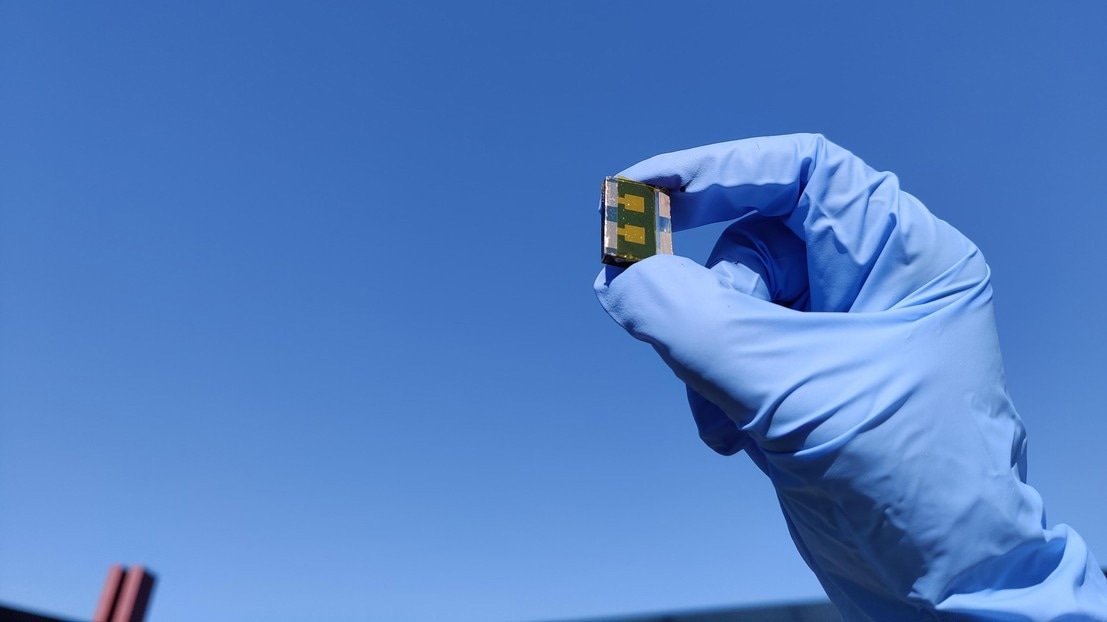A groundbreaking design for Perovskite Solar Cells (PSCs) is revealed by the researchers of EPFL and Northwestern University. The most stable PSCs with a power-conversion efficiency above 25%, paving the way for upcoming commercialization.

Image Credit: École Polytechnique Fédérale de Lausanne.
PSCs stand at the forefront of solar energy innovation, gaining attention for their low manufacturing cost and high-power conversion efficiency. However, there remains a significant obstacle on the path to commercializing PSCs: achieving both high efficiency and long-term stability, particularly in demanding environmental conditions.
The solution hinges on the interaction between the layers of PSCs, which has revealed a dual nature. These layers can enhance the cells' performance but, at the same time, lead to rapid degradation, rendering them unsuitable for everyday use.
A significant leap has been made in designing PSCs with high stability and power-conversion efficiency in partnership between the labs of Michael Gratzel at EPFL and Edward Sargent at Northwestern University, surpassing 25% of the most pressing challenges in the solar energy sector.
The study was published in Nature.
The research team concentrated on devising inverted PSCs, a design that exhibited potential concerning operational stability. They introduced an innovative concept, referred to as the “conformal self-assembled monolayer on textured substrates,” which denotes a distinct single layer of molecules that naturally and uniformly covers the uneven surface of a textured substrate.
The new design addresses the challenge of “molecular agglomeration,” a phenomenon where molecules cluster together instead of dispersing uniformly. Such clustering on the textured surfaces of solar cells can significantly impede their performance.
A special molecule called 3-mercaptopropionic acid (3-MPA) is introduced by the researchers into the solar cells' self-assembled monolayer (SAM) formed by a molecular layer of phosphonic acids substituted by a carbazole. This selectively extracts the positive charge carriers called holes produced under illumination in the perovskite films.
However, this role is compromised by the aggregation of the PAC molecules. The contact between the perovskite material and the solar cell's textured substrate is enhanced by adding 3-MPA to enhance performance and stability, thus allowing to disassemble molecular carbazole clusters, and ensuring a more even distribution of the molecules in the self-assembled monolayer.
This addition promotes a more even distribution of molecules on the solar cell's surface, preventing the formation of troublesome clusters and thereby enhancing both the stability and efficiency of the PSC.
The new design enhances light absorption at low energy loss at the interface between layers, leading to a lab-measured power-conversion efficiency of an impressive 25.3%. The inverted PSCs show remarkable resilience when it comes to stability. The device maintains 95% of its peak performance even after being subjected to rigorous conditions of 65 °C and 50% relative humidity for over 1000 hours. This level of stability, combined with such high efficiency, is unprecedented in the realm of PSCs.
This groundbreaking design marks a notable advancement toward the market integration of PSCs. By effectively tackling both their efficiency and stability challenges and considering their lower production costs compared to current solar cells, widespread adoption becomes feasible.
Moreover, this novel approach has the potential to extend its benefits beyond solar cells, enhancing the performance of other optoelectronic devices that necessitate efficient light management, such as LEDs and photodetectors.
Journal Reference:
Wei, M., et al. (2023). Low-loss contacts on textured substrates for inverted perovskite solar cells. Nature. doi.org/10.1038/s41586-023-06745-7